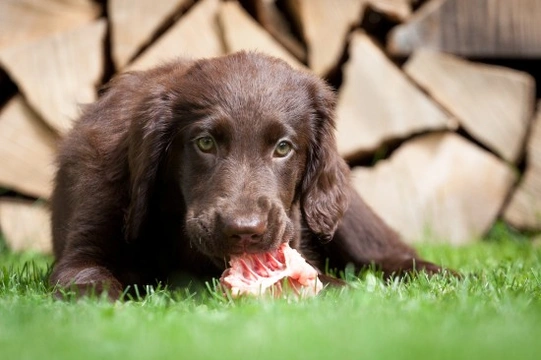
How to feed a hyperactive dog
A dog in the prime of their life that eats a balanced diet and gets enough exercise will naturally be lively, interested in what is going on and alert, within the constraints of the natural traits of the breed. Some dogs have naturally much higher energy levels than others, but this does not necessarily mean that they are hyperactive. There is a difference between a lively, energetic dog that needs to receive plenty of exercise, and one that simply cannot wind down and chill out in the normal manner.
A dog whose mind is constantly busy, has a poor attention span and is always looking for stimulus or something to do might be hyperactive; measure your dog’s resting heart rate, and if this is higher than normal when at rest, your dog may well be hyperactive.
Owning a truly hyperactive dog can be challenging, and it is wise to find out if there is a specific cause for this behaviour. While it is not always possible to get to the bottom of the issue or address and reduce your dog’s hyperactivity, one of the ways in which you can try to tackle it is by changing your dog’s diet, something you might wish to consider undertaking in consultation with your vet. Allergies to some ingredients or simply feeding a diet that is not the perfect match for your dog, or that provides too much energy can contribute to or even cause hyperactivity, so in this article, we will look at some of the potential fixes. Read on to learn more!
Get help from your vet
If you are concerned that your dog might be hyperactive in the medical sense, it is worth involving your vet sooner rather than later, to get their advice and potentially run some tests on your dog. If your vet suspects that your dog’s diet is contributing to or causing their hyperactivity, they will likely look at a range of different corrective options in terms of what you feed your dog to help.
Natural feeding
The vast majority of commercially produced complete dog food diets will include ingredients such as preservatives, flavours and colours, some of which can be allergenic triggers for susceptible dogs.
In order to counteract this, you may need to try a range of alternatives in an attempt to feed your dog a more natural diet, which cuts out any unnecessary ingredients and replicates as closely as possible the diet that your dog would eat in the wild.
This may mean preparing special meals for your dog at home, following the directions of your vet or a canine nutritionist, or subscribing to a diet such as the BARF diet, which is based on raw, meaty bones and good quality vegetable matter.
Carbohydrates
Commercial dog food diets usually contain a reasonable source of carbohydrates from grain, rice or potato, and this is usually perfectly suitable for most dogs. However, feeding carbohydrates can cause spikes and troughs in your dog’s blood sugar, and when their blood sugar is spiking, this may cause your dog to become hyperactive. Cutting out the carbohydrates from your dog’s diet may lead to a quieter, less hyperactive dog!
Protein
Protein is the most important component of the diet for most dogs, and protein is provided in the form of meat, fish and eggs. Very lively, working dogs need to eat a high amount of protein to maintain their energy levels, but feeding too much protein to a dog that does not lead a very active life can lead to excessive energy levels and potential hyperactivity.
Try switching to a low protein diet, adding or reducing the protein levels as you go along until you get the balance right and your dog’s energy levels become a good match for their lifestyle and life stage.
Sugars
Like carbohydrates, sugar in the diet will lead to spikes and troughs in blood sugar, and when there is a spike you may find that your dog’s behaviour goes into overdrive. Most good quality commercial dog foods do not contain sugar, or enough sugar to cause an issue in all but the most sensitive of dogs, but many treats and scraps do!
Take a careful look at the ingredients of the dog treats that you give to your pooch, and before you tip your table scraps into their bowl, think about what was in your meal as well!
Feeding the right food for your dog’s age and life stage
Most pet food manufacturers offer a range of different foods to meet the needs of dogs at their different life stages, from puppy to juvenile to adult to mature.
These foods contain different combinations of ingredients, in order to match up with the needs of dogs at different ages. Puppy and juvenile dog diets contain more protein than adult food, to support your dog as they grow, while mature diets tend to be lower in calories to account for your dog’s reducing activity levels.
Make sure that the food your dog has is the right one for their life stage, and a good fit for their natural energy levels.



